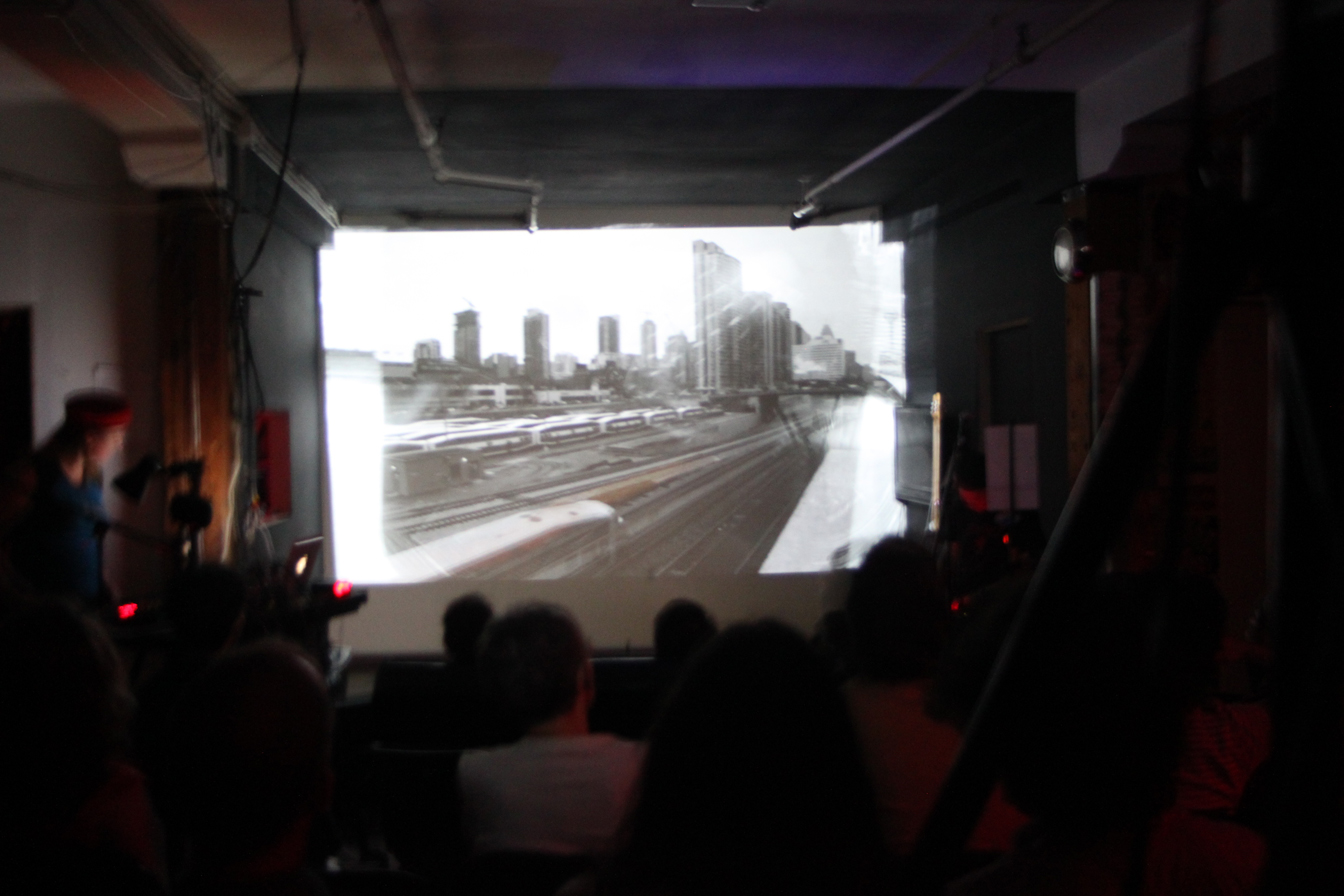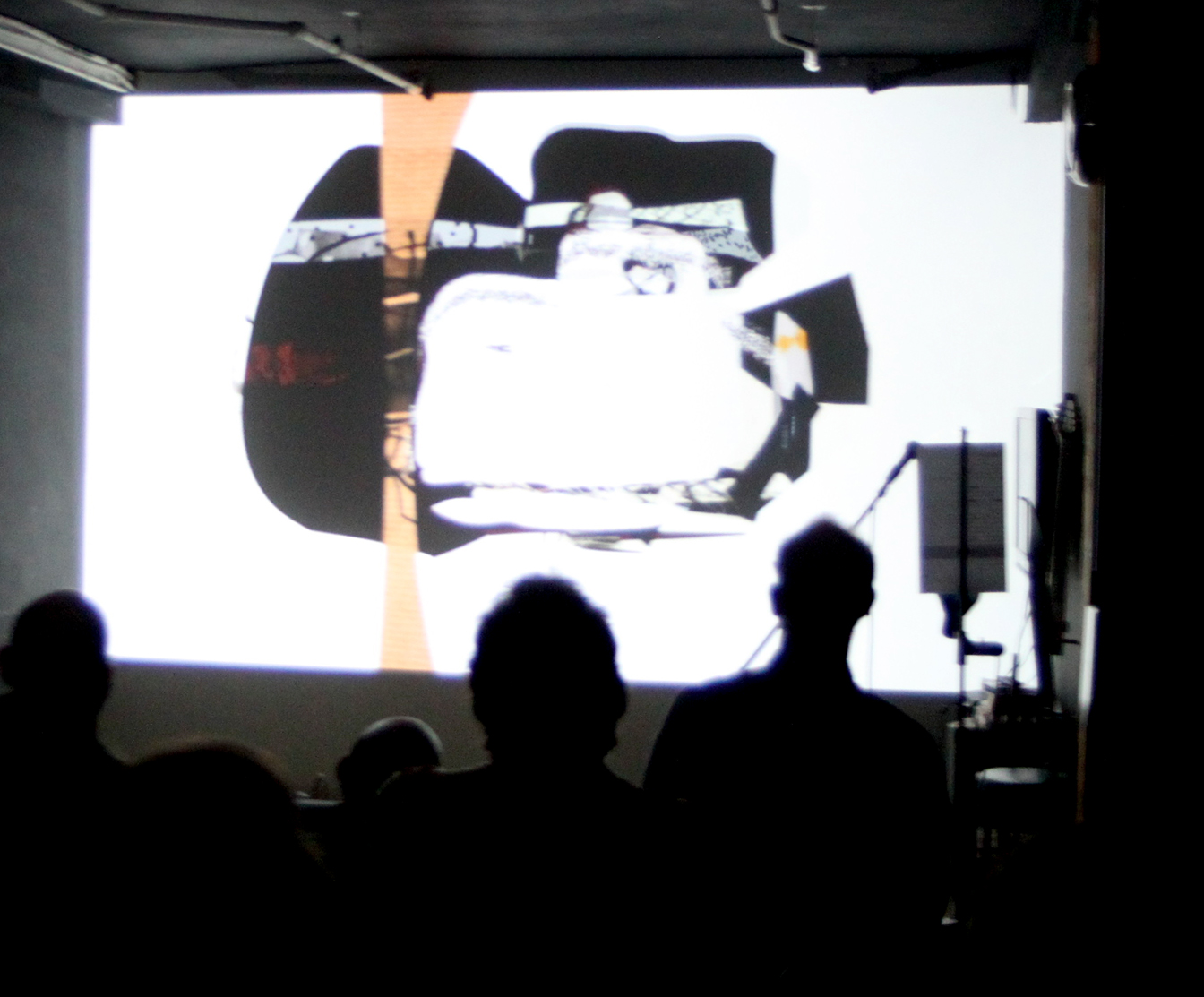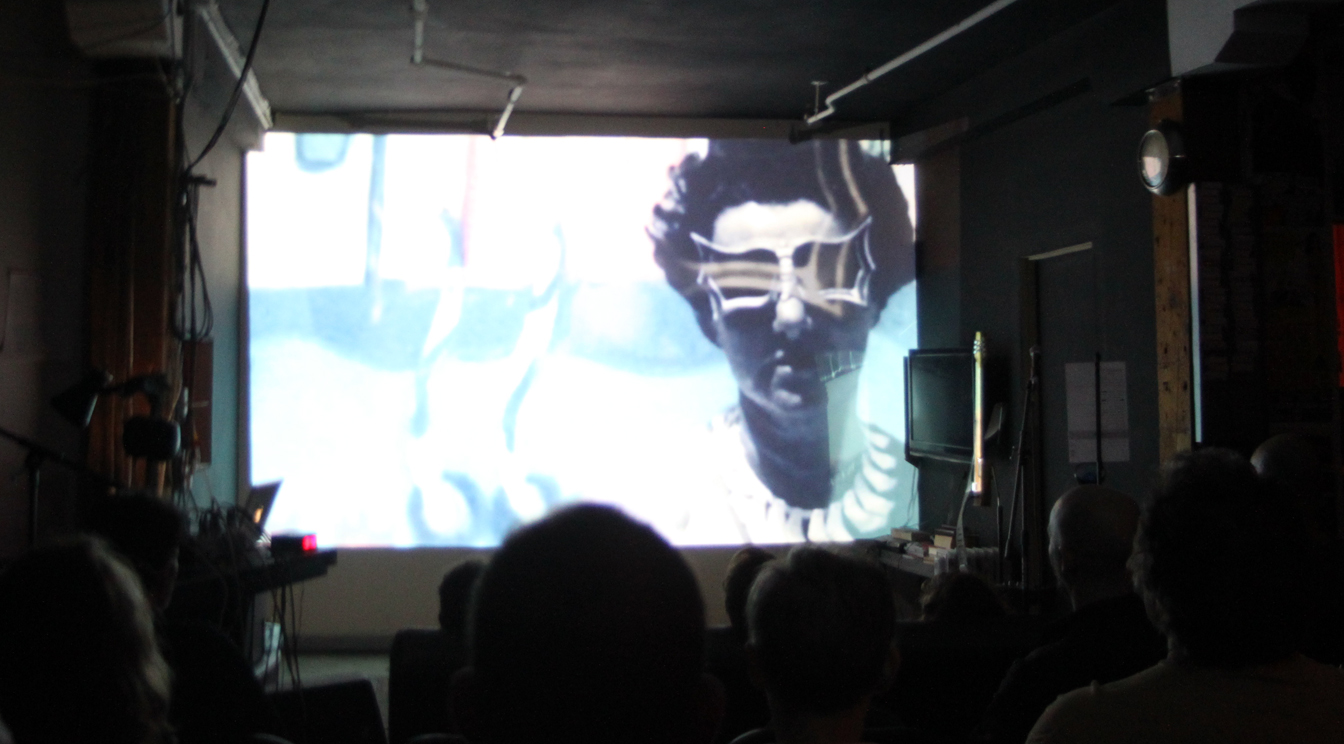The Trash Palace
May 26, 2012, 9:30 p.m.
The defining characteristic of art is poetry. For all the things that art can be, without poetry it is not.
Burning Birch X3, the worldwide festival of short art films and videos by artists at the Trash Palace in Toronto May 26, was an evening of visual poetry. Without a pre-selected theme, the program revealed a number of shared commonalities from contemporary artists around the world who work with film and video as an art form. These include art as a sacred ritual, art as an expression of joy, as moving paintings and drawings. From the program of 15 shorts, only one film “Hack Your Own Leg”, from Latvia, resembled a traditional form of storytelling. Curator Wesley Rickert explained that he included the film for its surrealist elements, that the spoken narrative was not in English and there were no subtitles. It reminded me of Chekov’s play “The Seagull“. The other films screened are direct results of leaving the traditional road of storytelling. The films and videos embrace pluralism without losing individual mannerisms.
 Black Plastic Fork, Wesley Rickert, Toronto, Canada 2012
Black Plastic Fork, Wesley Rickert, Toronto, Canada 2012
I saw differences in films through schools. Aaron Zeghers’ work indicates a manner I’ve seen in other films by artists from Winnipeg, but it is clearly his own style and voice. I’m not familiar enough with the current schools in Paris and Berlin to say that Julia Weber’s or Andreas Karaoulanis‘ work is “typical”, but its clear that their films are current and sophisticated without being slick or corporate. They are poetic.
 Imtra, Andreas Karaoulanis, Germany, 2012
Imtra, Andreas Karaoulanis, Germany, 2012
Anti-corporate culture was an electricity that ran through the night. First, the festival itself was not sponsored by an institution looking to relieve itself of social responsibility through branding. Secondly, these artists are making films and videos because they are artists, not because they are paid to make them. They are not the only artists out there doing so, which is why last night’s screening was so important. Historical buildings are being replaced with uniform zombie condos but we carve out spaces to screen poetry and this is resistance to mainstream culture. The corporations continue to make movies centered around the male protagonist and the conflict-resolve model but artists paint on film. The difference is a perspective of enlightenment, not entitlement.
 The Story of Thomas Edison, Aaron Zaghers, Winnipeg, Canada, 2011
The Story of Thomas Edison, Aaron Zaghers, Winnipeg, Canada, 2011
Every film was an original experience, an exhibition times 15 which is more than I can properly speak to after a night of punk performance. But there are three elements that were remarkable. First, the audience was impressive. The crowd who came out are clearly interested in seeing contemporary art films and this is good news for everyone. Secondly, Wes Rickert curated a bridge-building event and provided original, live audio for two of his films, which I was part. An audience member asked about the audio during the break and was surprised to find out that it was not only live but created in the moment, not pre-rehearsed and not pre-recorded. (This doesn’t mean we don’t practice, all artists practice, but the approach is outside the tradition of a repeatable score IE. based in “pure jazz”). During the second half of the program the 253469 noise band was joined by percussionist Maja Klisinski, visiting from Belgrade, Serbia.
 Vertigo, Julia Weber, Paris, France, 2012
Vertigo, Julia Weber, Paris, France, 2012
Lastly, I fell in love with a 7 minute film by Montreal artist Sylvain Chausee called “Joy Maybe”. Sylvain created this film which had over 150 cuts, making it impossible to screen so he had a print made and the first showing of this print was at Burning Birch X3. A silent film, shot in black and white, expressed the joy of dancing, of being, of life. I watched as two young women in plaid shirts danced and threw the shirts into the air. The shirts fell and flew over and over, making me think of the early 90s when I first got into the world of art and underground culture. It made me happy to remember but not nostaglic for the past. Art is present, it is now but it is not everywhere. You have to find it.
Text by Kathleen Reichelt. Photo: Christina Kozak and Kathleen Reichelt
